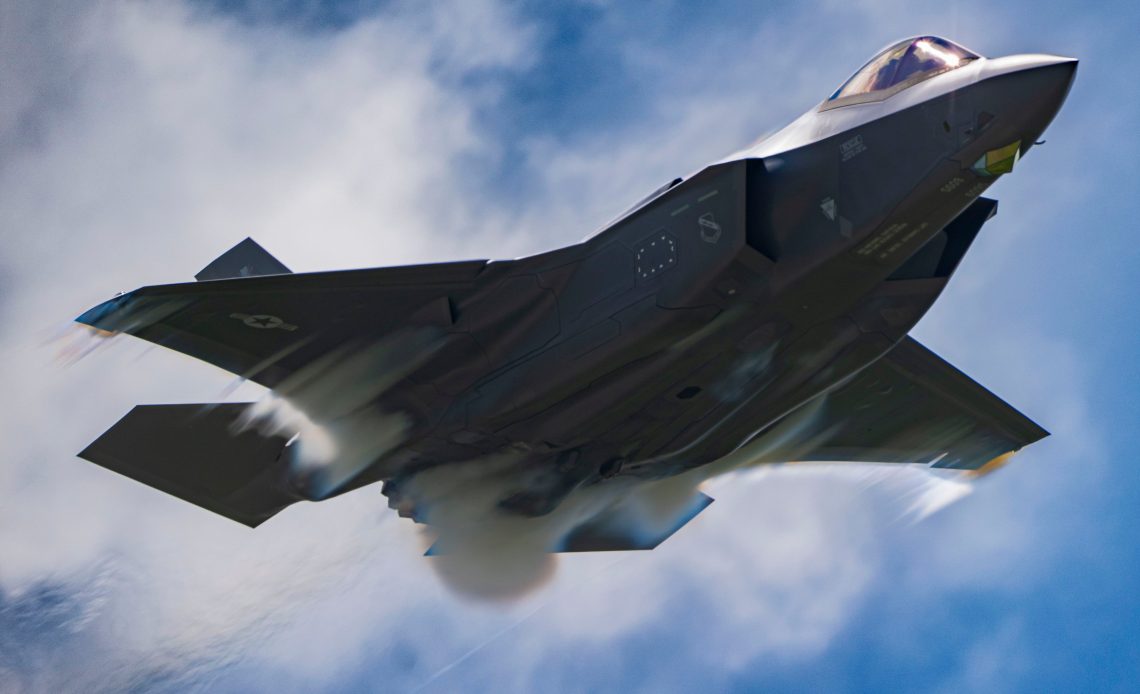
The U.S. has officially accepted 36 new Lockheed Martin-made F-35 Joint Strike Fighters since lifting a yearlong delivery halt in July, 29 of which have so far been ferried to their new homes.
Beginning in July 2023, the Pentagon refused to accept enhanced F-35s due to problems with the aircraft’s upgraded Technology Refresh 3 hardware and software, which include new and improved displays, computer memory and processing power. The modifications are also needed for a more expansive upgrade package — known as Block 4 — that will allow the F-35 to carry more weapons, better identify targets and conduct electronic warfare.
Those restrictions were lifted after the development of a “truncated” version of the software that would allow the delivery of the jets and enable them to fly combat training missions.
Lt. Gen. Michael Schmidt, the F-35′s program executive officer, said on Tuesday that those aircraft are now being safely rolled out from their storage at Lockheed Martin’s facility in Fort Worth, Texas.
The military has not said exactly how many F-35s were built and then stored during the delivery halt, but the jets number in the dozens.
But with the militaries of multiple nations and three U.S. services awaiting their long-overdue F-35s, it’s not easy figuring out who should get their aircraft first, Schmidt said at the Air and Space Forces Association’s Air Space Cyber conference outside Washington.
“You could have quite the debate on how that order should look,” Schmidt said.
After such a long delay, following the established contract order might not be the most efficient and effective way to organize deliveries, Schmidt said. So, Schmidt brought together officials from the Air Force, Navy and Marine Corps, as well as international partners flying the F-35, to sort out a revised delivery schedule based on each of their training and capability requirements.
However, the new fighter aircraft are not yet able to fly in actual combat. Schmidt said he is hopeful these F-35s will be combat-capable in 2025, but noted there is “a little bit of work to do” to make sure such issues don’t arise again.
“We need to hold the industry accountable, and we need to change the future for the F-35 program,” Schmidt said.
Participants in the F-35 program haven’t properly invested in labs to develop capabilities for the jet, he said. Fixing that is a priority.
The F-35 Joint Program Office in February brought in an independent review team to analyze the status of the F-35 program’s software development and assess how to expand its capabilities. The JPO earlier this year told Lockheed to “kickstart” its investment in software development as part of the negotiations over the truncated software.
“I really wanted to make it clear to everybody that we need to change the way we do development in the F-35 program, and get ourselves to a place where we can truly deliver on our promises,” Schmidt said.
The JPO is also withholding about $5 million in payments, per aircraft, from Lockheed Martin until TR-3′s combat capability is qualified and delivered.
But the TR-3 holdups have had ripple effects on the F-35 program. Air Force Secretary Frank Kendall said at a July air show in England that Block 4 upgrades have been “delayed substantially.”
And the F-35 program is rethinking Block 4 to ensure it has the right strategy for the upgrades.
Some of the roughly 80 capability requirements making up Block 4 are crucial for the jet, Schmidt said, but are also uniquely challenging.
So, the F-35 program is taking another look at each capability to reassess what kind of technical maturity they would need, whether the program can deliver them and how much they will cost, he said.
Schmidt said he hopes to have a Block 4 plan next spring that will meet the needs of warfighters, but there are still program costs and capacity constraints to overcome.
“This is the best fighter in the world,” he said. “We need to continue to keep it the best fighter in the world.”
Author: By Stephen Losey
Source: DefenseNews



